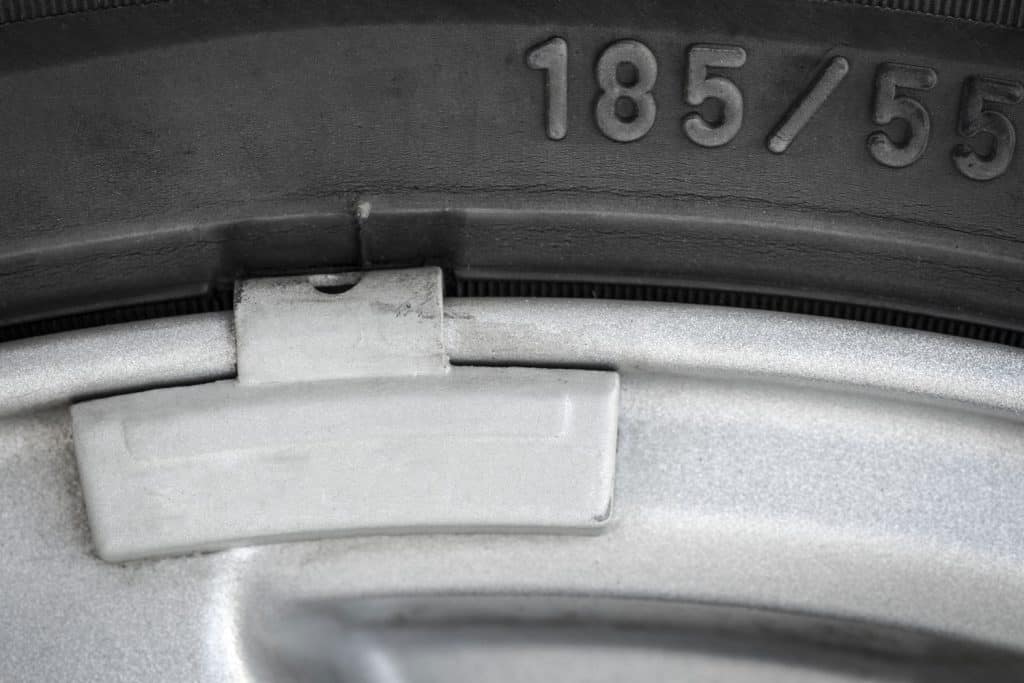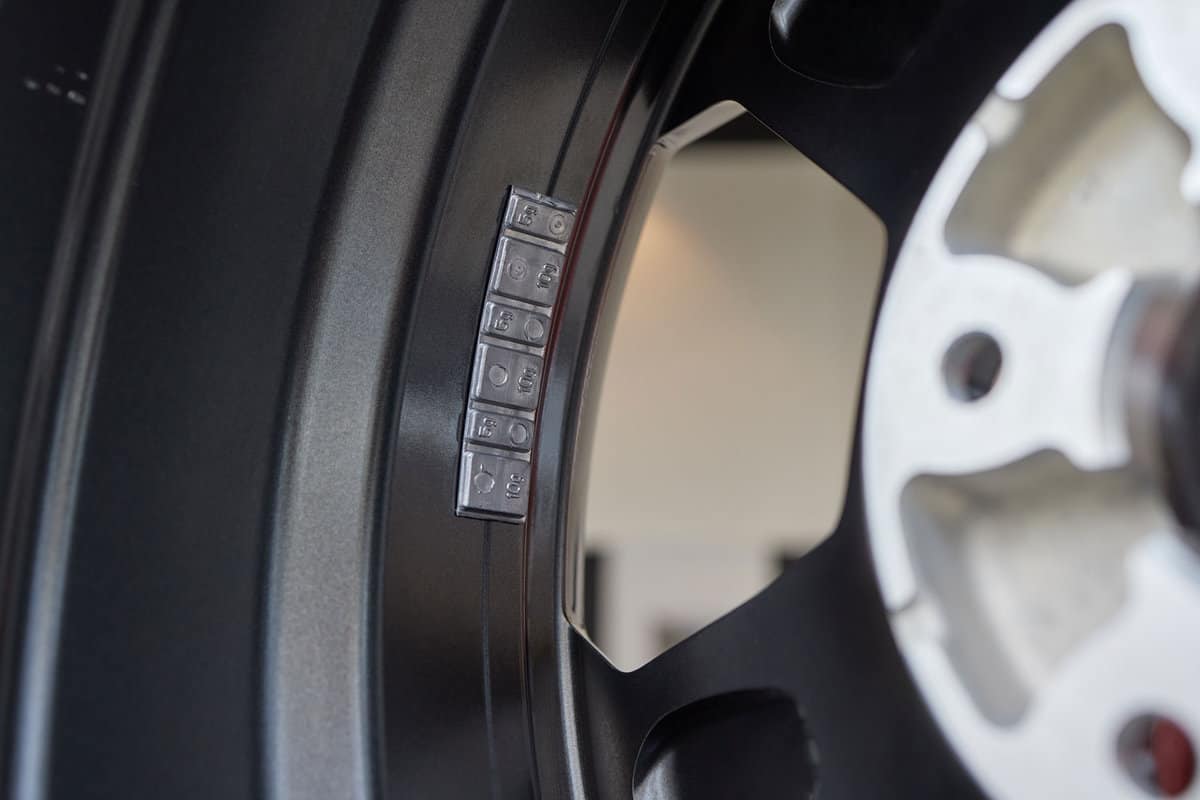Are you having trouble learning how to remove unbalanced tires that cause your vehicle to vibrate or pull to one side?
Improperly installed or damaged tire balance weights commonly cause unbalanced tires.
Removing these weights is a crucial step in ensuring a smooth and safe ride.

In this article, we will guide you through removing tire balance weights so that you can get back on the road with confidence.
Before we dive into the steps, it's important to note that tire balance weights come in two types: clip-on and adhesive.
Clip-on weights are attached to the wheel's rim using a clip, while adhesive weights are stuck to the wheel using a strong adhesive.
The removal process for these two types of weights is slightly different, but we will cover both methods in this article.
Let's start removing those tire balance weights!
Why Tire Balance Weights Are Essential for Performance
First, inspect the inner and outer sidewalls of the tire to locate any tire balance weights.
This helps prevent vibrations and wobbling, leading to uneven tire wear and poor fuel efficiency.
There are two main types of tire balance weights: clip-on weights and adhesive wheel weights.

Clip-on weights are easy to install and remove, but they can be seen. Adhesive wheel weights are less visible, but they can be more difficult to install.
The type of tire balance weight you choose will depend on your needs and preferences.
If you want easy installation and removal, clip-on weights are a good option. If you want a more invisible weight, adhesive wheel weights are a good choice.
Here are some additional things to keep in mind when choosing tire balance weights:
- The size and shape of the weight should match the size and style of your wheel.
- The weight should be made of a material that is resistant to corrosion.
- The weight should be easy to install and remove.
Tools Required for Removal
Removing tire balance weights can be a challenging task, but with the right tools, it can be done quickly and easily.
Here are the tools you will need to remove tire balance weights:
- Hammer
- Screwdriver
- Wire brush
- Adhesive remover
Use the hammer to tap the weight off the wheel. Be careful not to hit the wheel or damage the surface.
If the weight is stuck, use the screwdriver to pry it off.
Place the screwdriver between the weight and the wheel and gently pry it off. Be careful not to scratch or damage the wheel.
After removing the weight, use the wire brush to clean the wheel's surface. This will remove any excess adhesive or metal particles from the weight.
If any adhesive is left, use the adhesive remover to loosen it.
Apply the adhesive remover to the weight and let it sit for a few minutes before attempting to remove it.
How to Remove Clip-On Weights
Clip-on weights are a common type of tire balance weight that is attached to the rim of the wheel.
They are easy to install and remove, but sometimes they can be stubborn to remove.
Here's how you can remove clip-on weights from your wheels:
- First, locate the weight on the rim of the wheel. Clip-on weights are typically located on the outer edge of the rim.
- Use a flat-head screwdriver to pry the weight away from the rim gently. Be careful not to scratch the rim or damage the weight.
- If the weight is still attached, use a hammer to tap it off the rim.
- Place the screwdriver between the weight and the rim and tap it gently with the hammer.
- Once the weight is removed, remove the adhesive residue with WD-40.
- If you plan on reusing the weight, clean it thoroughly before reattaching it to the rim. Use a wire brush or sandpaper to remove dirt or debris.
Remember always to be careful when removing clip-on weights from your wheels.
Use a soft touch to avoid damaging the rim or the weight. If you're unsure how to remove the weight, it's always best to seek the help of a professional.
4 Steps to Remove Adhesive Weights
Removing adhesive weights from your tires can be a bit of a hassle, but it's a necessary task if you want to maintain your vehicle's performance and aesthetics.
Here are some steps you can follow to remove adhesive weights from your tires:
1. Remove as much of the weight as possible.
You can do this by gently peeling away the weight with your fingers or using a plastic razor blade or scraper to remove any excess weight or adhesive tape.
Be careful not to scratch the surface of the wheel.
2. Apply an adhesive remover to the remaining adhesive.
There are many different types of adhesive removers available on the market.
Some of the most effective ones include Goof Off, brake cleaner, and 3M Auto Adhesive Remover.
Apply the adhesive remover to a clean cloth and rub it onto the adhesive. Let the remover sit for a few minutes to soften the adhesive.
Check out this adhesive remover on Amazon.
3. Wipe away the adhesive with a clean cloth.
Once the adhesive has been softened, use a clean cloth to wipe it away.
Be sure to use a fresh section of the cloth for each wipe to avoid spreading the adhesive around.
4. Repeat steps 2-3 if necessary.
If adhesive is still left on the wheel after the first attempt, repeat the process until all the adhesive has been removed.
5 Preparation Steps for New Weights
Before installing new tire balance weights, there are a few things you need to do to ensure a successful installation.
1. Clean the surface where the weights will be attached.
Use a mild detergent and water or a specialized wheel cleaner if you have alloy wheels.
Avoid harsh chemicals or abrasive cleaners that damage the paint or clear coat on your wheels.
2. Touch up any chips or scratches on your wheels.
This will help protect your wheels from further damage and keep them looking their best.
You can find touch-up paint at most auto parts stores, or you can order it online from the manufacturer.
3. Get the right type of weights for your wheels.
If you have alloy wheels, you should use adhesive weights that won't damage the finish. If you have steel wheels, you can use clip-on weights that attach to the rim.
4. Check the balance of your tires.
You can do this with a tire balancer, which you can find at most auto parts stores or tire shops.
5. Install the new weights.
Follow the manufacturer's instructions carefully and double-check the placement of the weights before attaching them.
Proper Tire Rebalancing After Weight Removal
Now that you have successfully removed the tire balance weights, it's time to balance the tires.
Unbalanced tires can cause uneven wear and vibrations and affect your car's handling.
- Clean the wheel hub and rim with a wire brush. This will remove any dirt, debris, or old adhesive interfering with the balancing process.
- Mount the tire onto the balancing machine and adjust it until it is level. This will ensure that the tire is balanced evenly.
- Add weights to the rim until the tire is balanced. The weights will be placed on the rim to counteract any imbalances in the tire.
- Remount the tire onto the car. Once the tire is balanced, it can be remounted onto the car.
It is important to use new weights that match the weight of the old ones when balancing your tires.
As mentioned, using the wrong weight can cause unbalanced tires, leading to uneven wear and vibrations.
Additionally, it is essential to balance all four tires, not just those with weights removed.
Don't Neglect Post-Removal Wheel Cleaning
By following these steps, you can clean your wheel and ensure it is free of any residue that could damage the finish:
1. Inspect the wheel.
Look for any cracks, dents, or other damage. If you find any damage, repair it before proceeding.
This will help to prevent the damage from getting worse and make it more difficult to clean the wheel.
2. Remove loose debris.
Use a wire brush to remove loose dirt, debris, or brake dust from the wheel's surface. Be careful not to scratch the wheel's finish.
3. Remove adhesive residue.
Apply a residue remover to a clean cloth and gently rub the wheel's surface until all the residue is removed.
Be sure to follow the instructions on the product label you are using. Some common residue removers include Goo Gone and 3M Adhesive Remover.
4. Wipe the wheel dry.
Once all the residue has been removed, use a clean cloth to wipe the wheel's surface to ensure it is completely dry.
This will help to prevent the residue from re-adhering to the wheel.
4 Types of Tire Balance Weights
When balancing your tires, several types of balance weights can be used.
Each type of weight has its own advantages and disadvantages, and the type of weight you choose will depend on your specific needs and preferences.
1. Lead Weights
Lead weights have been used for years and are still a popular choice. They are durable and can withstand a lot of wear and tear.
However, lead is a toxic material, and many states have banned using lead weights due to environmental concerns.
2. Steel Weights
Steel weights are a popular alternative to lead weights.
They are just as durable and can withstand much wear and tear. Additionally, they are not toxic like lead weights, so they are a better choice for the environment.
3. Stick-On Weights
Stick-on weights are a newer type of balance weight that has become more popular recently.
They are made of heavy-duty adhesive material and can be attached directly to the inside of the wheel.
Stick-on weights are a good choice if you want a weight that is less visible and does not detract from the appearance of your wheels.
4. Clip-On Weights
Clip-on weights are easy to install and can be removed and repositioned.
They are also more visible than stick-on weights, so if you want a more noticeable weight, clip-on weights may be a better choice.
Smooth Rides Ahead
Removing tire balance weights is an important maintenance task that leads to smooth, stable handling.
While the process requires care and the right tools, this guide equips you with the key steps for safe removal.
With weights gone and new ones properly installed, you can look forward to improved drivability and peace of mind on the road ahead!
For more tire care tips and fixes, check out:
How to Easily Remove a Blown Tire from the Rim

